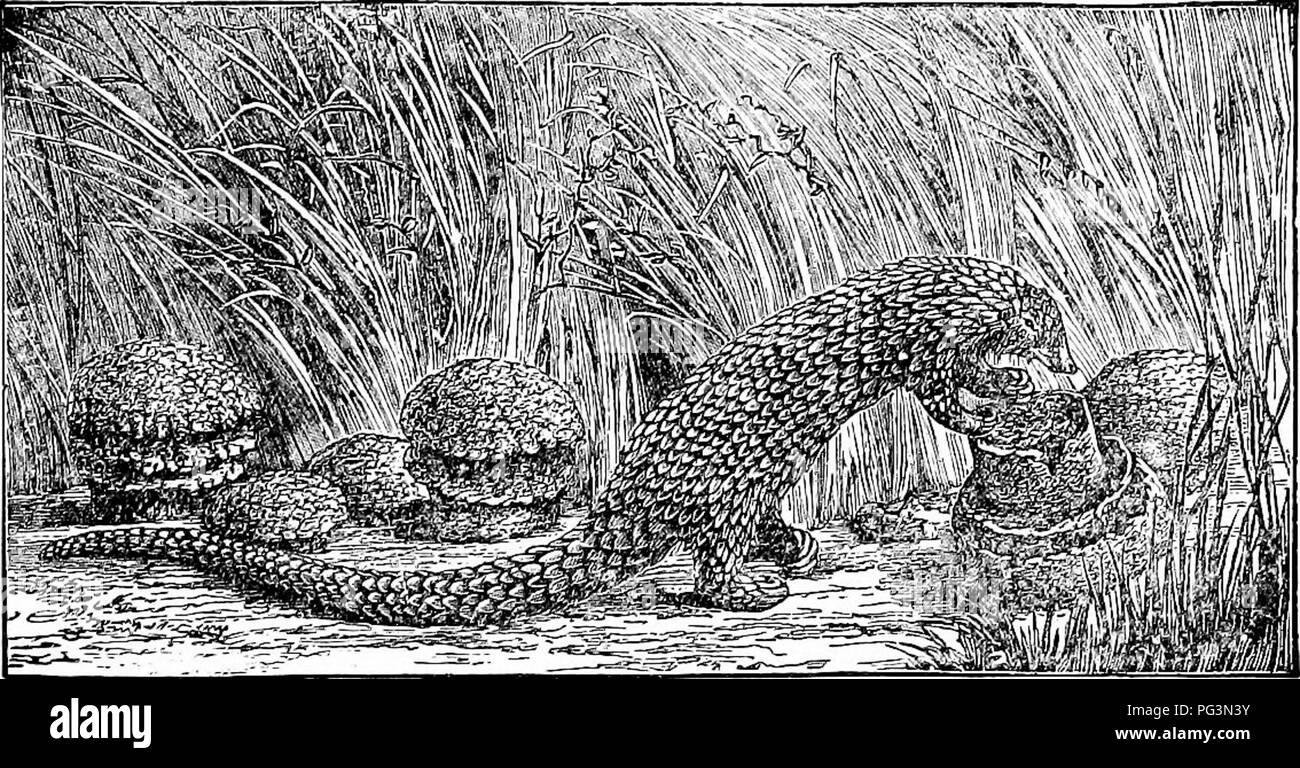. A manual of zoology. Zoology. IV. VERTEBRATA: MAMMALIA, EDENTATA 563 marsupial bones and inflected angle of the jaw. The dentition, on the other hand, has undergone a progressive, divergent development, so that the distinctions are much more pronounced than in the marsupials, and hence of importance in differentiating the orders. Order I. Edentata. A few families, poor in species, are united as Edentata because teeth are absent or, more usually are markedly degenerate. Persistent functional in- cisors are lacking, canines but rarely occur {Bradypus); molars may be present, sometimes in great

Image details
Contributor:
Central Historic Books / Alamy Stock PhotoImage ID:
PG3N3YFile size:
7.1 MB (830.2 KB Compressed download)Releases:
Model - no | Property - noDo I need a release?Dimensions:
2188 x 1142 px | 37.1 x 19.3 cm | 14.6 x 7.6 inches | 150dpiMore information:
This image is a public domain image, which means either that copyright has expired in the image or the copyright holder has waived their copyright. Alamy charges you a fee for access to the high resolution copy of the image.
This image could have imperfections as it’s either historical or reportage.
. A manual of zoology. Zoology. IV. VERTEBRATA: MAMMALIA, EDENTATA 563 marsupial bones and inflected angle of the jaw. The dentition, on the other hand, has undergone a progressive, divergent development, so that the distinctions are much more pronounced than in the marsupials, and hence of importance in differentiating the orders. Order I. Edentata. A few families, poor in species, are united as Edentata because teeth are absent or, more usually are markedly degenerate. Persistent functional in- cisors are lacking, canines but rarely occur {Bradypus); molars may be present, sometimes in great numbers {Priodon gigas, the large armadillo, has about a hundred molars), but they are poorly rooted, prismatic, without enamel, and usually monophyodont. Since the aardvark (Orycteropus) and Tatusia have a heterodont milk dentition in embryonic life in which incisors occur, and fossil edentates (Entelops) with complete dentition are known, the absence of a replacement of the teeth is to be explained by degeneration. The great number of sacral vertebrfe is striking, being as many as thirteen in some armadillos. The order is essentially tropical, but one species entering the United States. The oldest fossils occur in Patagonia (eocene or oligocene). Sub Order I. NOMARTHRA. Old World. FODIENTIA. Animals with strong digging claws, long tail, and long, sticky tongue used in catching insects. Orycteropus, aardvark, long snout, sparse bristly hair. SQUAjMATA. Toothless, body covered with overlapping scales. Manis, pangolins of Asia and. Fig. 6ii.—Manis longicaudala, pangolin (from Monteiro). Africa (fig. 6ii). Sub Order II. XENARTHRA. New World. VERMIL- INGUIA, ant eaters. Resemble manids in toothless jaws, tongues, and claws, but are hairy and lack scales. Myrmecopkaga. TARDIGRADA, sloths. Hairy, rudimentary tail, and few teeth, long strong claws by which they hang back downwards from limbs of trees. Brady pus, nine cervical vertehrx; Cholcrpus, six cervicals. Fossils allied are